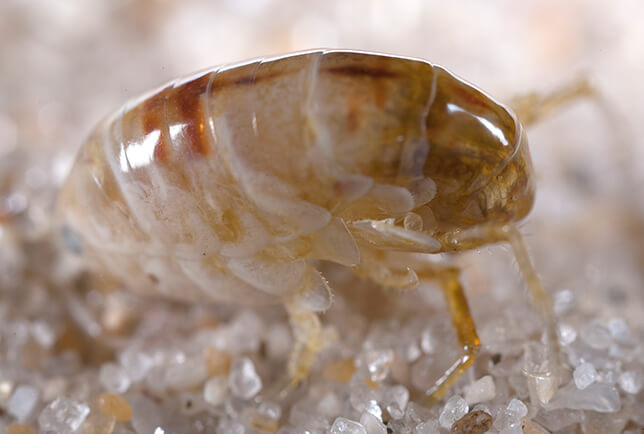What Are Sand Fleas?
Chigoe fleas and a special group of tiny amphipods and crustaceans fall into the sand or beach flea category. The chigoe species is the only true insect from this group, but the others earned the name because the way they hop on sand resembles a flea’s jumping movements.

Sand fleas found on the Atlantic coast are amphipods or crustaceans that don’t bite. However, chigoe fleas are parasites that form a noticeable, pea-size nodule under the hosts’ skin. While they don’t spread disease, the pests do burrow into flesh, which causes painful wounds.
New England residents returning from a seaside vacation may discover red marks on their legs or feet and believe that they are sand flea bites. However, chigoe fleas need tropical habitats like those in South America and Africa. Florida is the only state that has biting beach fleas, and these pests – lucky us – do not live in any part of the Northeastern U.S.
What Do Sand Fleas Look Like?
Sand flea species range in size from smaller than a grain of rice to over an inch in length. They have multiple legs, long antennae, and yellowish-brown coloring. Some amphipods have forked appendages on the ends of their bodies, too. Female chigoe fleas also have specialized mouthparts so they can attach to a host’s skin.
Other Pests That Bite
It’s easy to mistake the itchy red welts left by biting midges, gnats, or cat fleas for sand flea bites. However, gnats and no-see-ums are common in New England, so they are far more likely to be the culprit unless you’ve visited a tropical region recently. If any type of insect bite becomes painful and warm to the touch seek medical attention to guard against infection.
Chigoe flea bites require a doctor’s care, as treatment often involves the removal and wound care. To find out more about beach fleas or biting pests around your home or business, contact the professionals at Waltham Pest Services.